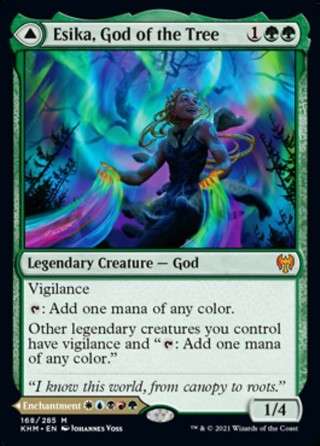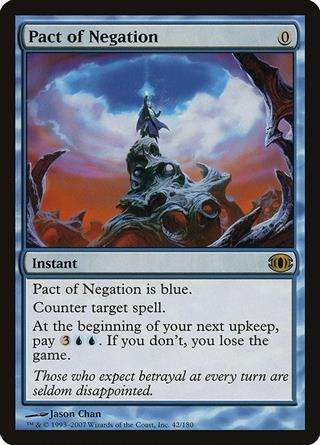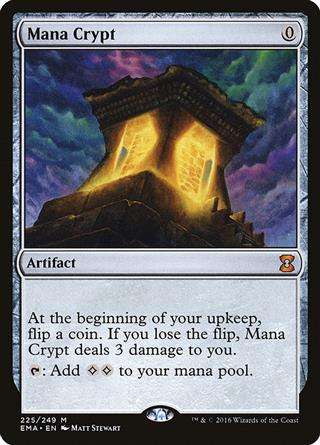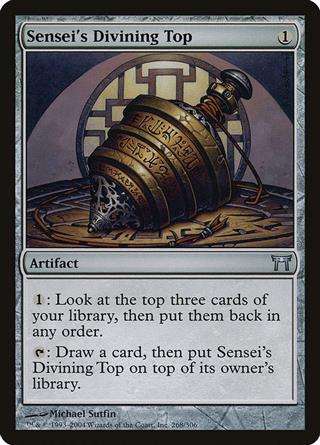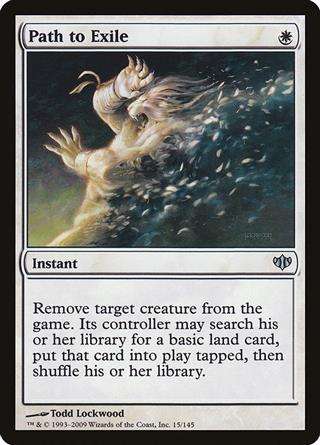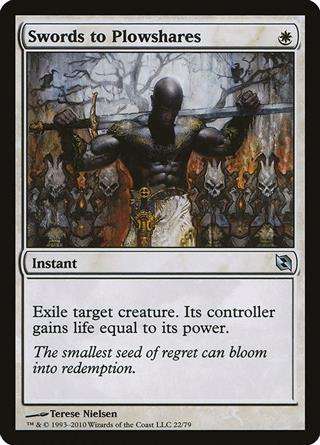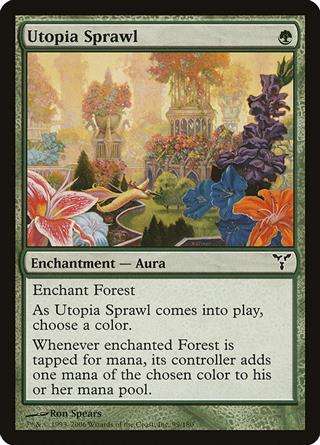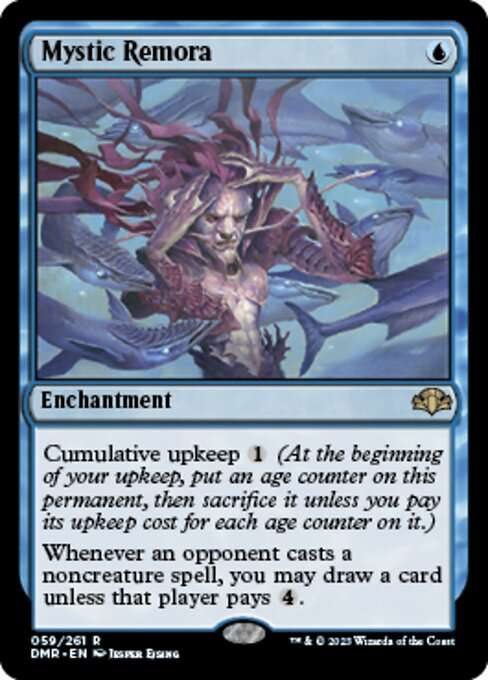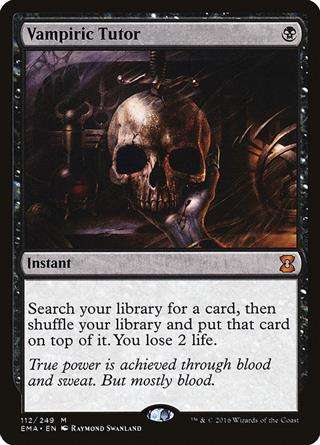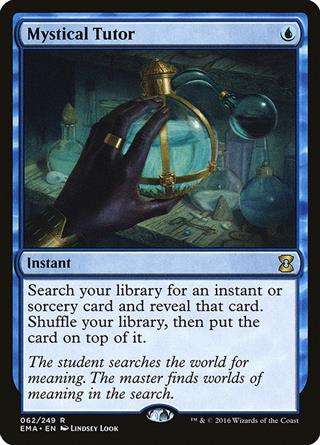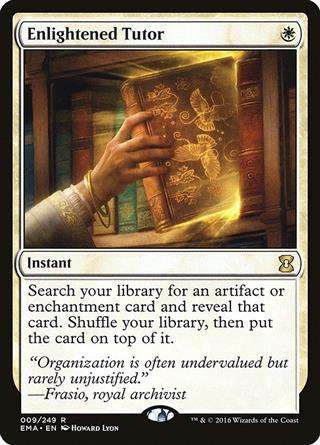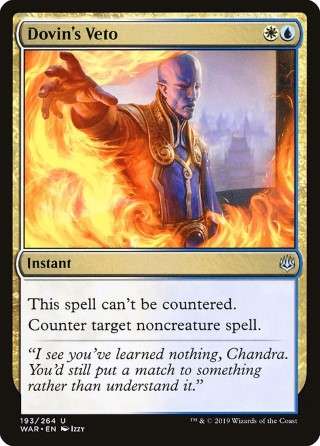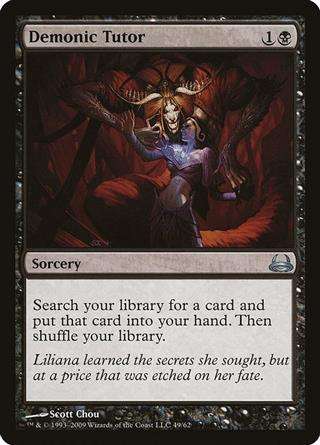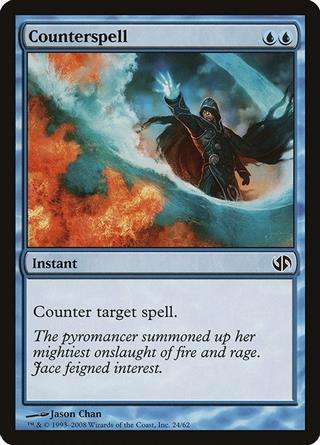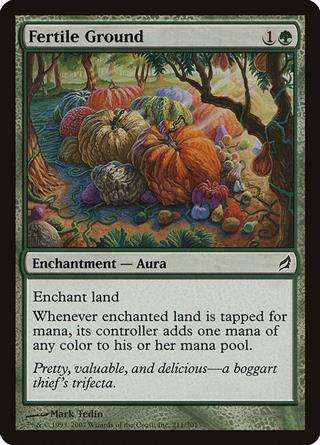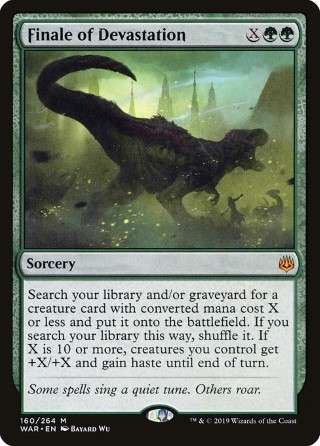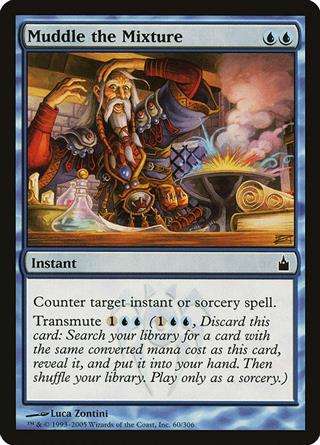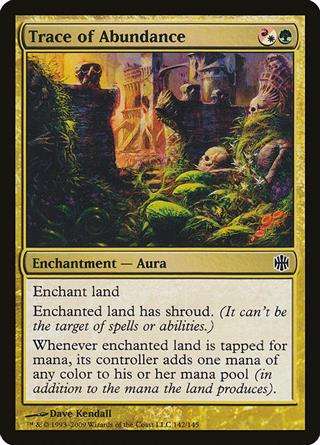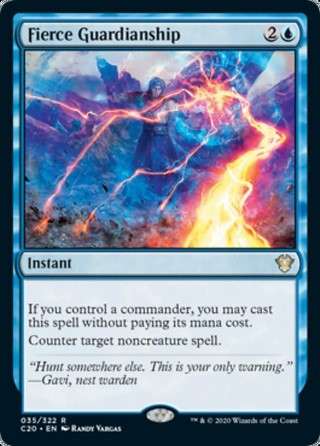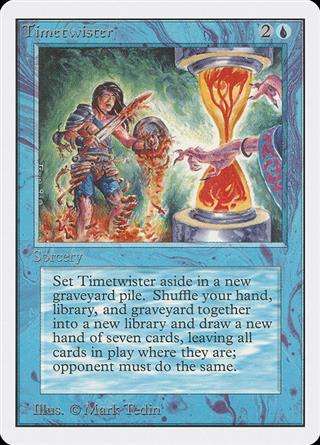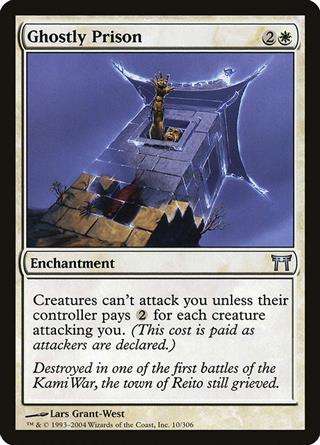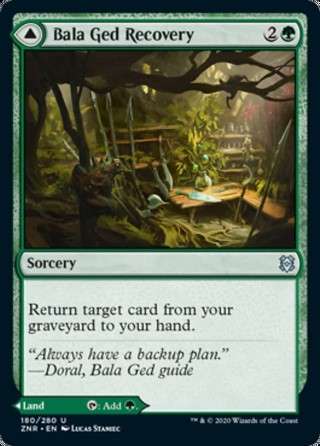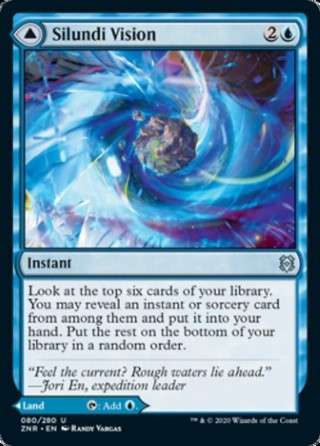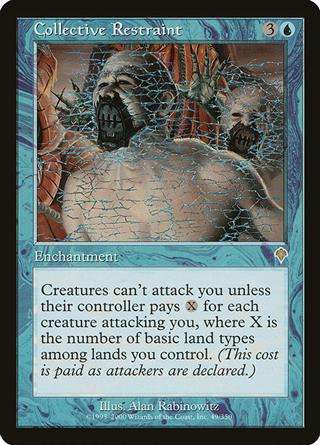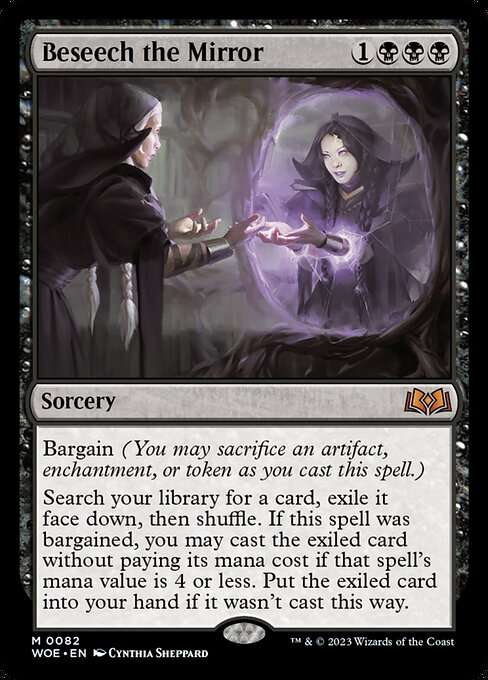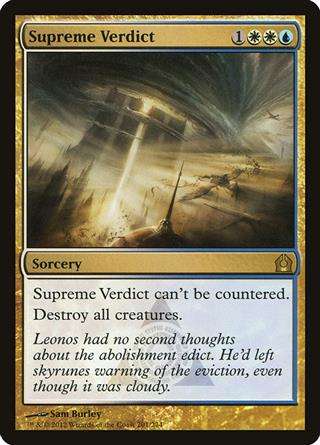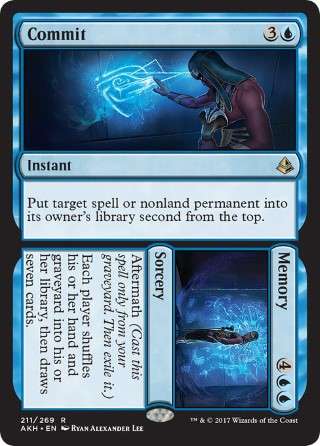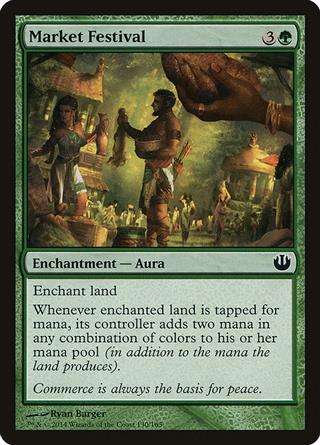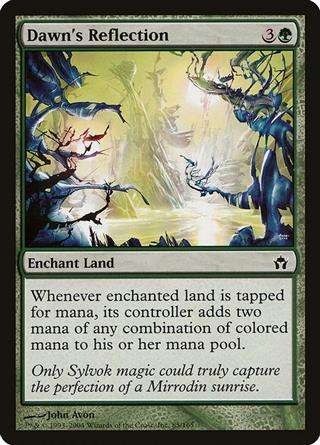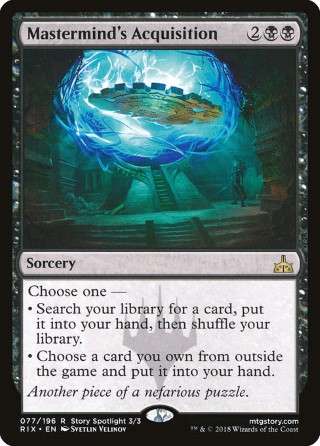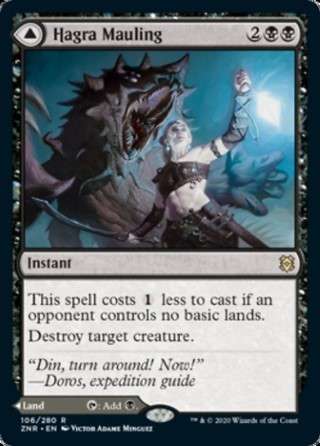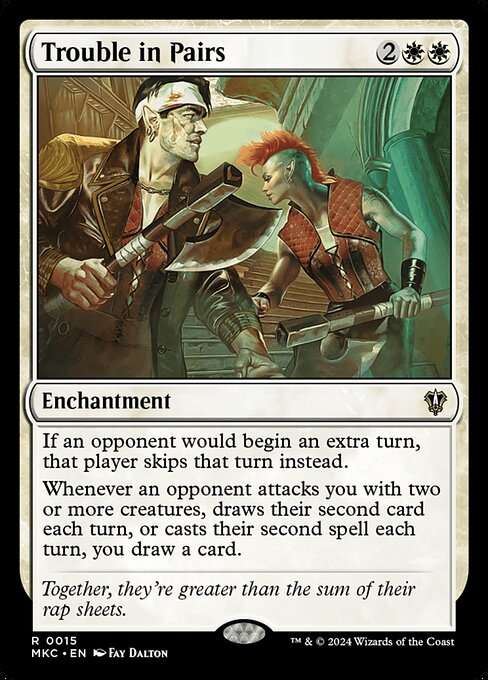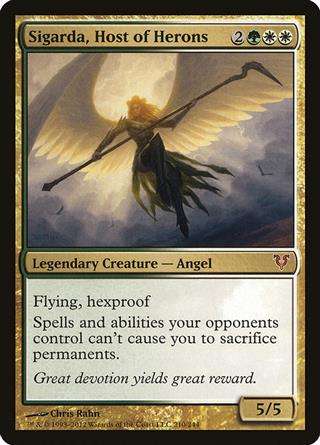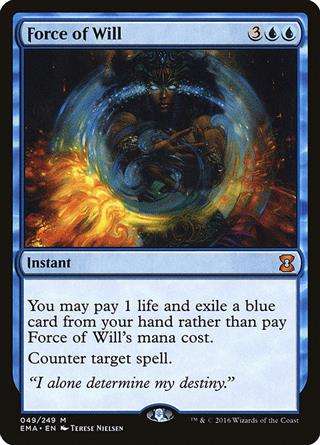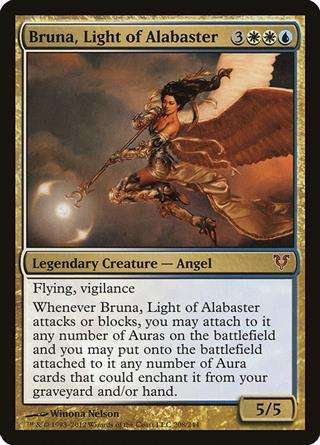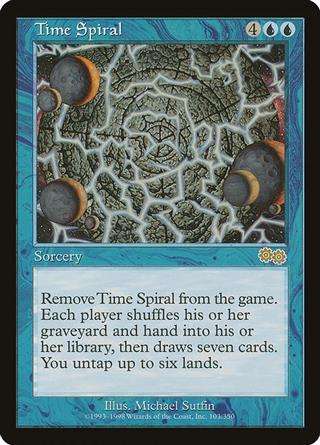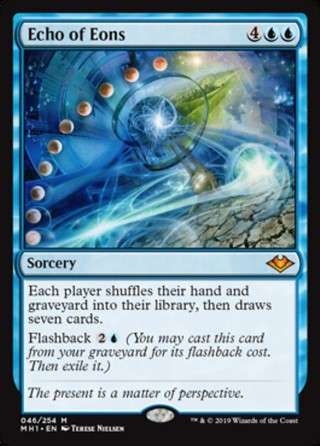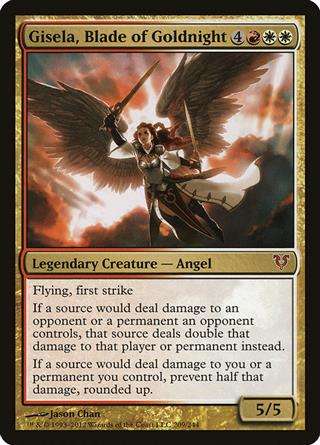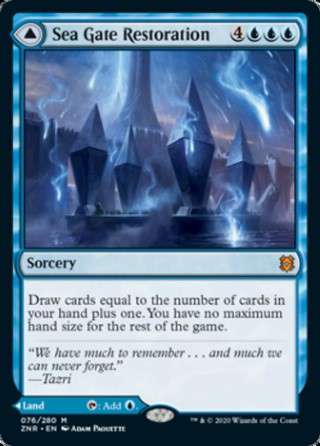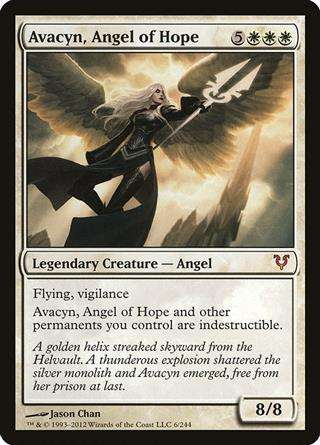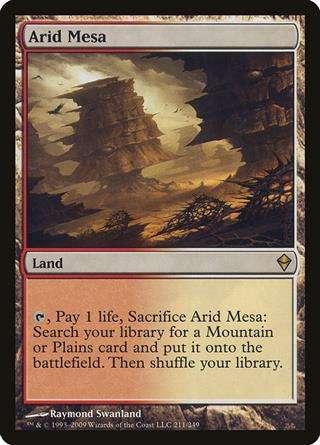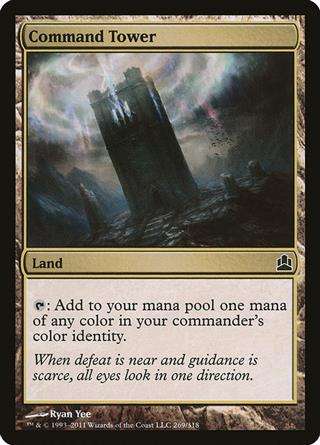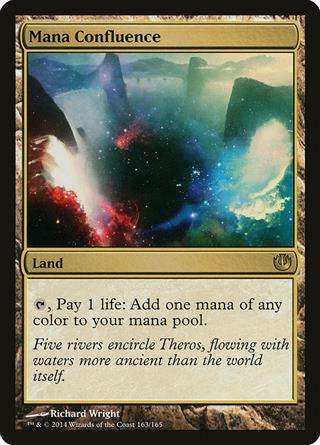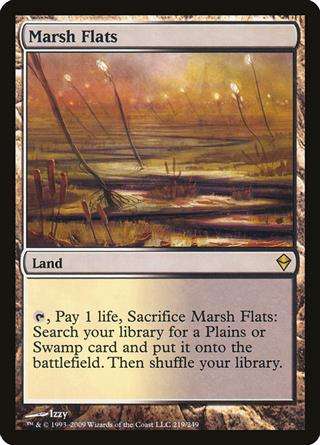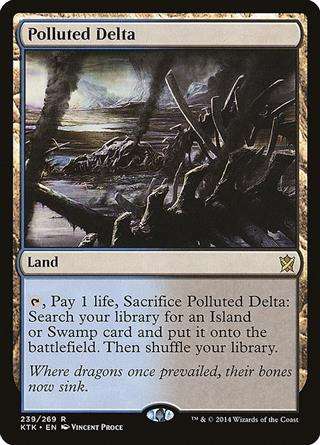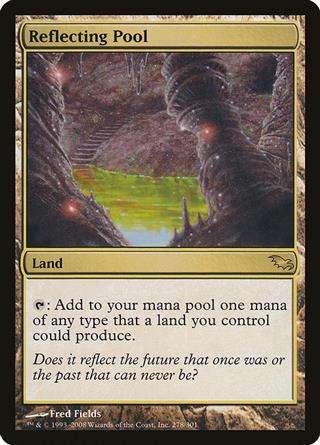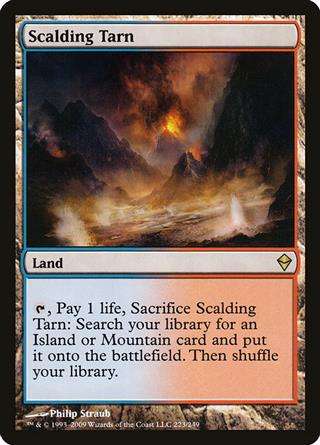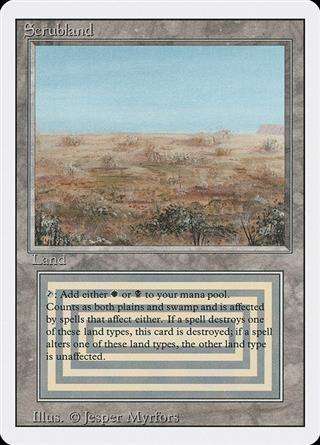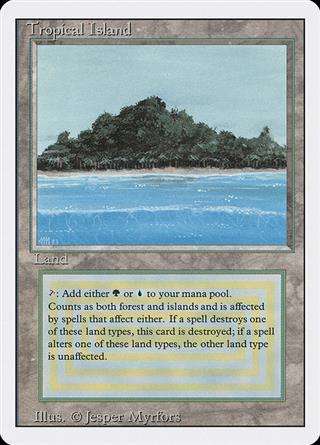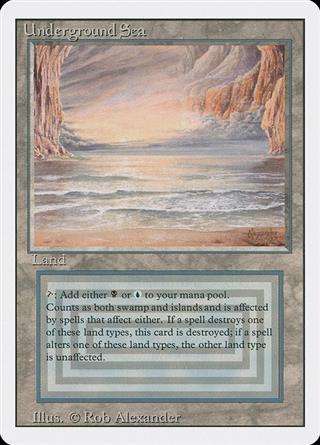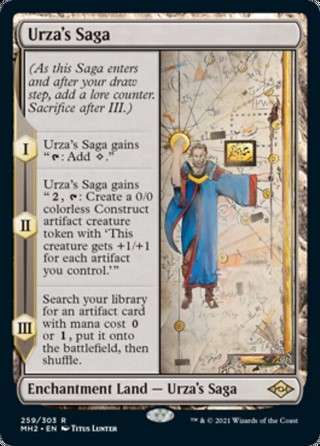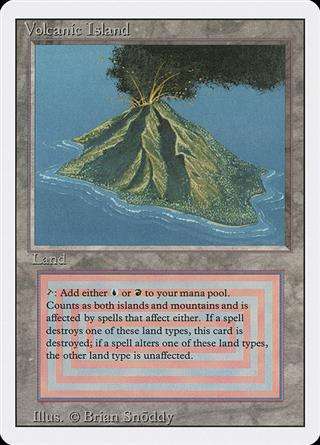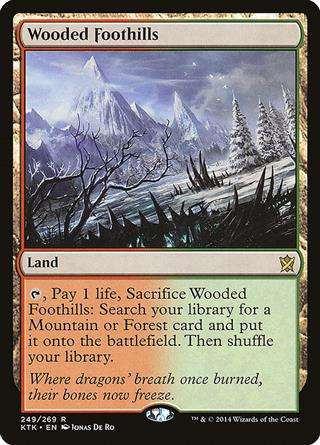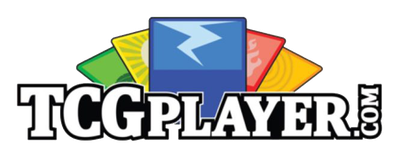Commander - Angel Sisters of Innistrad [Primer]
Commander 1 cards (1 distinct)
| $16.740.02 |
Main 99 cards (99 distinct)
| Instant, Sorcery, Enchantment, Artifact (64) | |||
|---|---|---|---|
| $4.00€2.920.01 | |||
| $3.82€2.470.51 | |||
| $31.22€23.440.02 | |||
| $3.30€2.030.03 | |||
| $43.00€33.4210.53 | |||
| $46.29€37.471.13 | |||
|
1
Negate
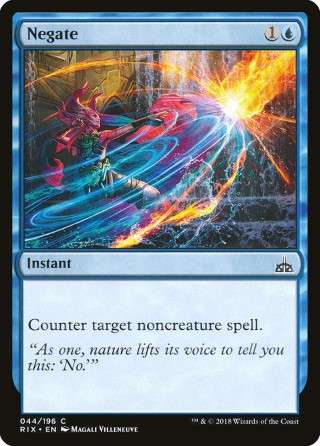
|
$0.25€0.090.03 | ||
| $14.76€9.820.73 | |||
| $43.05€30.07 | |||
| $18.13€18.145.83 | |||
| $28.00€11.730.10 | |||
| $12.99€7.950.03 | |||
| $1.60€1.020.03 | |||
| $1.49€1.000.10 | |||
| $117.40€68.083.46 | |||
| $22.01€14.325.83 | |||
|
1
Windfall
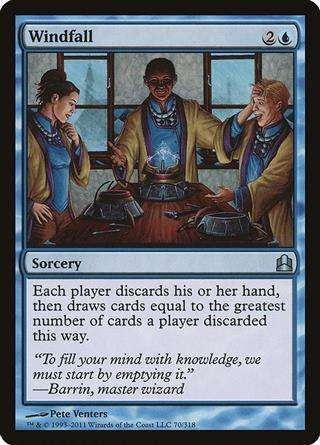
|
$3.87€2.740.25 | ||
| $7185.25€3050.00 | |||
| $305.52€173.35 | |||
| $0.80€0.710.08 | |||
| $0.51€0.48 | |||
| $40.68€28.606.47 | |||
| $69.47€56.697.48 | |||
| $40.74€43.6610.10 | |||
| $25.07 | |||
| $7.40€5.63 | |||
| $45.48€29.100.46 | |||
| $10.99€7.260.41 | |||
| $24.03€14.593.60 | |||
| $90.30€64.42 | |||
| $4.99€3.730.64 | |||
| $6.93€3.302.02 | |||
| $19.03€13.450.52 | |||
| $18.00€21.06 | |||
| $3.00€2.210.02 | |||
| $24.99€16.140.03 | |||
| $4.84€2.070.04 | |||
| $12.21 | |||
|
1
Sol Ring
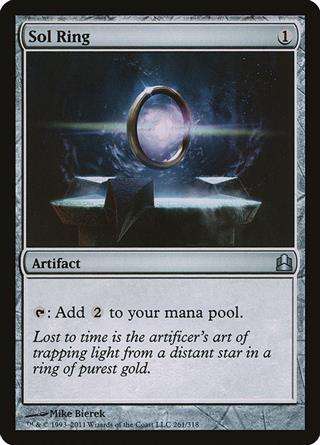
|
$1.73€1.380.18 | ||
| $2.90€1.880.03 | |||
| $2.66€2.700.09 | |||
| $1.23€1.090.02 | |||
| $2.68€1.470.15 | |||
| $0.50€0.510.02 | |||
| $9.32€5.290.02 | |||
| $0.35€0.130.03 | |||
| $25.99€19.721.86 | |||
| $194.96€135.4312.67 | |||
| $2.08€1.310.03 | |||
| $1.79€0.710.03 | |||
| $6.751.31 | |||
| $0.20€0.120.03 | |||
| $0.40€0.110.03 | |||
| $26.572.00 | |||
| $4.600.03 | |||
| $0.350.03 | |||
| $1.32€0.790.02 | |||
| $0.98€0.530.03 | |||
| $3.400.02 | |||
| $0.59 | |||
| $3.08 | |||
| $0.890.02 | |||
| $8.16€4.320.02 | |||
| $25.88€19.09 | |||
| Creature (5) | |||
| $37.00€25.580.11 | |||
| $0.96€1.090.02 | |||
| $2.80€2.830.02 | |||
| $0.72€0.573.60 | |||
| $6.95€4.790.02 | |||
| Land (30) | |||
| $17.84€14.582.92 | |||
| $21.56€18.131.54 | |||
| $18.21€10.691.01 | |||
| $0.65€0.810.07 | |||
| $1.50€1.180.03 | |||
| $21.98€19.391.88 | |||
| $10.47€4.360.02 | |||
| $42.00€29.235.10 | |||
| $16.70€12.341.04 | |||
| $23.13€19.984.78 | |||
| $26.69€22.762.70 | |||
| $10.16€7.710.06 | |||
| $22.60€20.085.24 | |||
| $18.05€14.882.82 | |||
| $16.51€13.801.66 | |||
| $22.54€20.081.51 | |||
|
1
Bayou
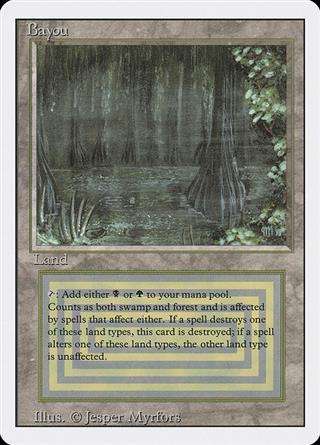
|
$427.98€279.45 | ||
|
1
Savannah
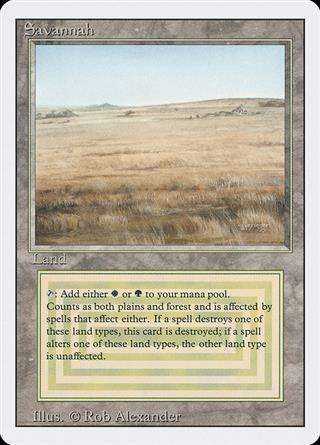
|
$349.00€217.60 | ||
| $343.24€224.01 | |||
|
1
Taiga

|
$379.99€229.18 | ||
| $518.74€358.98 | |||
|
1
Tundra
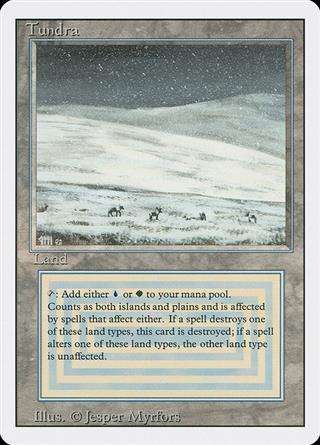
|
$491.44€328.35 | ||
| $831.46€568.88 | |||
| $699.69€494.86 | |||
|
1
Plateau
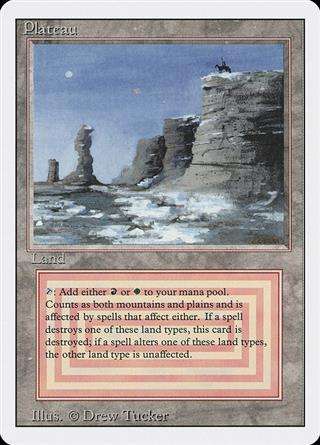
|
$349.99€223.61 | ||
|
1
Badlands

|
$399.69€291.36 | ||
| $21.10€20.328.35 | |||
| $46.10€38.9828.82 | |||
| $94.37€63.4624.01 | |||
| $5.31€8.32 | |||
(Simplified, true algorithm in MTGA not revealed by Wizards yet)
COMPARE WITH AETHERHUB COLLECTION
Add at least 100 different cards to your collection and set it as your Compare Collection on the manage page to see what cards from this deck you are missing.
COMPARE WITH MTG ARENA COLLECTION
Compare your MTG Arena Collection with AetherHub decklists or any other decks found on the web with the MTGA Assistant extension. Syncing your account will automatically upload your collection so you can see what cards you are missing right here.
Learn more Download For Windows
Name
The deck's name represents my love for the relationship between Avacyn and the four angel sisters of Innistrad, Liesa, Sigarda, Bruna and Gisela.
Level
This deck was built to be able to be played, depending on the player's preference, at a casual level or at a higher level table, but not in a competitive Elder Dragon Highlander (cEDH) scenario in any way. By including or removing Smothering Tithe, from the deck, before a match starts, will make it more casual or more competitive, as you will see, by reading this primer.
Goal and Mechanic
The goal of the deck is to try to win with my favorite cards, namely:
Liesa, Shroud of Dusk: leader of the Flight of Dusk.
Sigarda, Host of Herons: leader of the Flight of Herons.
Bruna, Light of Alabaster: leader of the Flight of Alabaster.
Gisela, Blade of Goldnight: leader of the Flight of Goldnight.
Avacyn, Angel of Hope: central figure of the Church of Avacyn.
Although it's not the most efficient way to win, it is one that brings me great satisfaction.
The decision to make Esika, God of the Tree my commander occurred because she provides me a good and efficient way of getting the five mentioned angels on the battlefiled. In other words, since these are the only creatures in the deck, the triggered ability from Esika, God of the Tree will generally allow one of them, and not any other creature, to enter the battlefield in each turn, thus allowing me to try to win the game with one or more of those angels, which is precisely the goal of the deck.
As beating up three opponents, with just five creatures, is not an easy job, Finale of Devastation ends up being a key piece for the deck's general strategy, since, when “X” is equal to or greater than ten, the card significantly increases the power and the toughness of creatures, in addition to giving them haste.
Smothering Tithe, in turn, is the deck's engine, which will generate a mana loop, fuelled by card draw, that will be provided by these cards:
Sensei's Divining Top.
Demonic Tutor.
Muddle the Mixture.
Scroll Rack.
Bala Ged Recovery.
Grim Tutor.
Silundi Vision.
Solve the Equation.
Timetwister.
Valakut Awakening.
Wheel of Fortune.
Windfall.
Beseech the Mirror.
Diabolic Tutor.
Mastermind's Acquisition.
Waterlogged Teachings.
Whispering Madness.
Time Reversal.
Echo of Eons.
Time Spiral.
Sea Gate Restoration.
Commit / Memory.
During the loop, the abundant amount of mana originated from that will enable Finale of Devastation to be cast several times, thus allowing the five angels to enter the battlefield very strong and with haste, which, in turn, could provide a lethal and evasive attack to the opponents.
It is also important to notice that the amount of mana generated by Smothering Tithe will be directly proportional to the number of opponents present in certain game. So, in other words, the loop will better take place when all opponents still alive.
Even though I really love Liesa, Shroud of Dusk, it ends up making the loop very difficult to be executed. In othe words, due to its life-loss triggered ability, it turns out being a very dangerous card to have on the battlefield, when you want to start the loop. Therefore, the best way is to start the loop without it being on battlefield. It also good to plan for it to be the last creature to be searched for, in the deck, by the Finale of Devastation. However, if, for some eventuality, it is on the battlefield, when the loop is intended to start, cards such as Otawara, Soaring City, Path to Exile, Swords to Plowshares, Cryptic Command, Commit / Memory, Fell the Profane and Hagra Mauling, if Avacyn, Angel of Hope is not on the battlefield to prevent this, will be able to remove it, while tutors and others card draw and card selection effects, provided by other cards, will allow the aforementioned removal spells to be obtained, as well, for this purpose.
Cards
1. Engine:
Smothering Tithe: as previously mentioned, this is the deck's engine.
2. Win Condition:
Liesa, Shroud of Dusk, Sigarda, Host of Herons, Bruna, Light of Alabaster, Gisela, Blade of Goldnight, Avacyn, Angel of Hope, Finale of Devastation: as previously mentioned, these cards represent the deck's win condition.
3. Card Draw for the Smothering Tithe's Loop:
Bala Ged Recovery, Beseech the Mirror, Commit / Memory, Demonic Tutor, Diabolic Tutor, Echo of Eons, Grim Tutor, Mastermind's Acquisition, Muddle the Mixture, Scroll Rack, Sea Gate Restoration, Sensei's Divining Top, Silundi Vision, Solve the Equation, Time Reversal, Time Spiral, Valakut Awakening, Waterlogged Teachings, Wheel of Fortune, Whispering Madness, Windfall, Timetwister: as previously mentioned, these cards are essential to keep loop going.
4. Other Tutors:
Enlightened Tutor, Imperial Seal, Mystical Tutor, Vampiric Tutor, Idyllic Tutor: these are among the best tutors in the format and will provide a greater consistency to the deck, as they can be used to obtain key pieces of the strategy. Additionally, Mystical Tutor and Vampiric Tutor, if played correctly, can be used in response to cards like Sensei's Divining Top, Scroll Rack, Silundi Vision, Valakut Awakening, Wheel of Fortune, Windfall, Whispering Madness and Sea Gate Restoration, so that they can contribute to keep the deck's loop going.
5. Land:
Arid Mesa, Bloodstained Mire, Flooded Strand, Marsh Flats, Misty Rainforest, Polluted Delta, Scalding Tarn, Verdant Catacombs, Windswept Heath, Wooded Foothills: these are the ten most powerful fetch lands in the game, as they make it possible for you to search, in your deck, for the ten most powerful dual lands in the game. Playing these two groups of cards provides you with an exceptional mana correction.
Badlands, Bayou, Plateau, Savannah, Scrubland, Taiga, Tropical Island, Tundra, Underground Sea, Volcanic Island: these are the ten most powerful dual lands in the game, which have an excellent synergy with the ten most powerful fetch lands in the game.
City of Brass, Command Tower, Exotic Orchard, Forbidden Orchard, Mana Confluence, Reflecting Pool: these rainbow lands can potentially generate mana of any color, which is very important for a five-color deck.
Ancient Tomb, Urza's Saga, Horizon of Progress, Otawara, Soaring City Bala Ged Recovery, Sea Gate Restoration, Silundi Visio, Valakut Awakening, Waterlogged Teachings, Fell the Profane, Hagra Mauling: the role of these lands will be explained in other sections of this primer.
6. Ramp:
Ancient Tomb, Urza's Saga, Horizon of Progress, Mana Crypt, Sol Ring: Ancient Tomb and Urza's Saga are very strong cards because they play a double role, a land role and a ramp role. Ancient Tomb has the powerfull benefit of providing you two mana, with a small disadvantage, which is little loss of life. Urza's Saga, in turn, is capable of searching your deck for the two strongest mana rocks in the format, Mana Crypt and Sol Ring. Finally, Horizon of Progress can be used as a ramp card and a rainbow land.
Carpet of Flowers, Utopia Sprawl, Wild Growth, Fertile Ground, Trace of Abundance, Dawn's Reflection, Market Festival, Omenpath Journey: all of these other ramp cards are enchantments, to have synergy with Sphere of Safety. Carpet of Flowers is very strong, due to the potential amount of mana it can generate, costing just one. Utopia Sprawl and Wild Growth are extremely efficient because they only cost one mana, to provide one mana. Fertile Ground and Trace of Abundance act similarly to two-mana mana rocks, which are very important for the format. Dawn's Reflection, Market Festival and Omenpath Journey are pragmatic choices because, despite not being the best ramp choice, they are capable of generating two or more mana, each filling one card slot in the deck. It is also important to notice that enchantments have the advantage of being less susceptible to removal than artifacts, which is the most common type of ramp.
7. Card Draw, Stax and Pillow Fort:
Collective Restraint, Ghostly Prison, Mystic Remora, Propaganda, Rhystic Study, Sphere of Safety, Trouble in Pairs: Sphere of Safety becomes stronger when combined with all the other enchantments mentioned and, together with Collective Restraint, Ghostly Prison and Propaganda, provides a slight stax effect and a good protection strategy (Pillow Fort), to give you time to assemble the deck's loop mentioned before. Mystic Remora, Rhystic Study and Trouble in Pairs also provide a slight stax effect, as well as being three of the best card draw in the format.
8. Board Wipe:
Cyclonic Rift, Supreme Verdict: Supreme Verdict is an efficient board wipe that has synergy with Avacyn, Angel of Hope and can't be countered, in addition to being blue, so it can be used as one more source for Force of Will and Force of Negation. Cyclonic Rift, in turn, is very strong in this deck, since, when combined with cards like Timetwister, Wheel of Fortune, Windfall, Whispering Madness, Time Reversal, Echo of Eons, Time Spiral, and Commit // Memory, it can “permanently” wipe, from the battlefield, all nonland permanents your opponents control. Also, it functions as a single target removal.
9. Counter Spell and Removal:
An Offer You Can't Refuse, Arcane Denial, Counterspell, Cryptic Command, Dovin's Veto, Fierce Guardianship, Force of Negation, Force of Will, Mana Drain, Negate, Pact of Negation, Swan Song, Commit / Memory, Muddle the Mixture: these are great counter spells, which serve to protect you and important pieces of your strategy, as well as can be used to prevent your opponents from winning the game, at certain scenarios. Furthermore, they are all blue, so that they can enhance the effects of Force of Will and Force of Negation. Cryptic Command and Commit / Memory, in turn, also function as removal spells. Lastly, Muddle the Mixture serves as a tutor.
Otawara, Soaring City, Fell the Profane, Hagra Mauling, Path to Exile, Swords to Plowshares: Path to Exile and Swords to Plowshares are among the best removal cards in the format, as they are extremely efficient. Otawara, Soaring City, Fell the Profane and Hagra Mauling, in turn, are very strong cards because they play a double role, a land role and a removal role.
Latest Articles
Created: 17 Nov 2019
579 120 0
| 11 | 16 | 55 | 17 | 0 |
|---|---|---|---|---|
| 0 | 0 | 0 | 1 | 0 |
| Symbols | Percentage | Lands |
|---|

